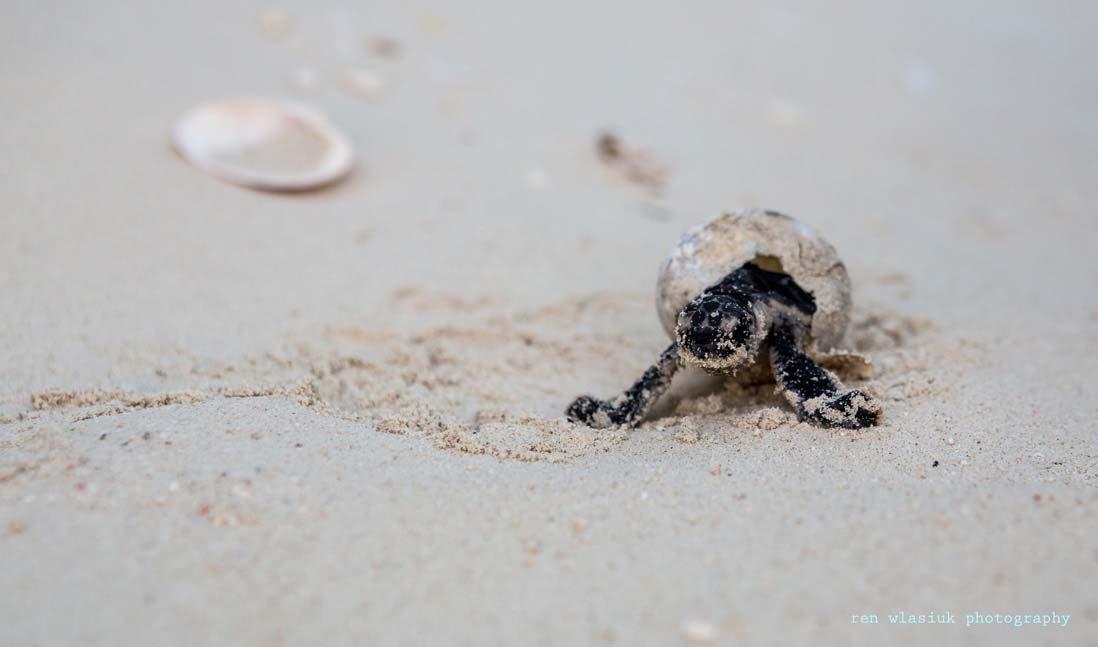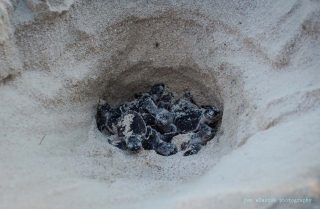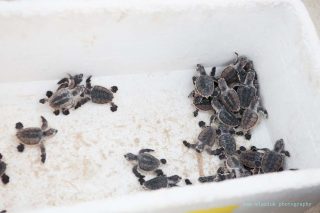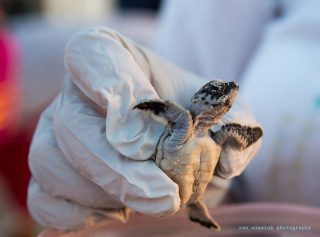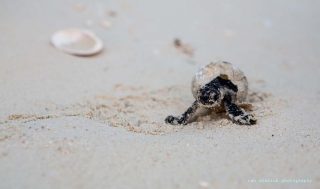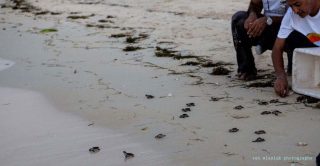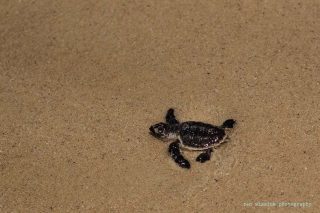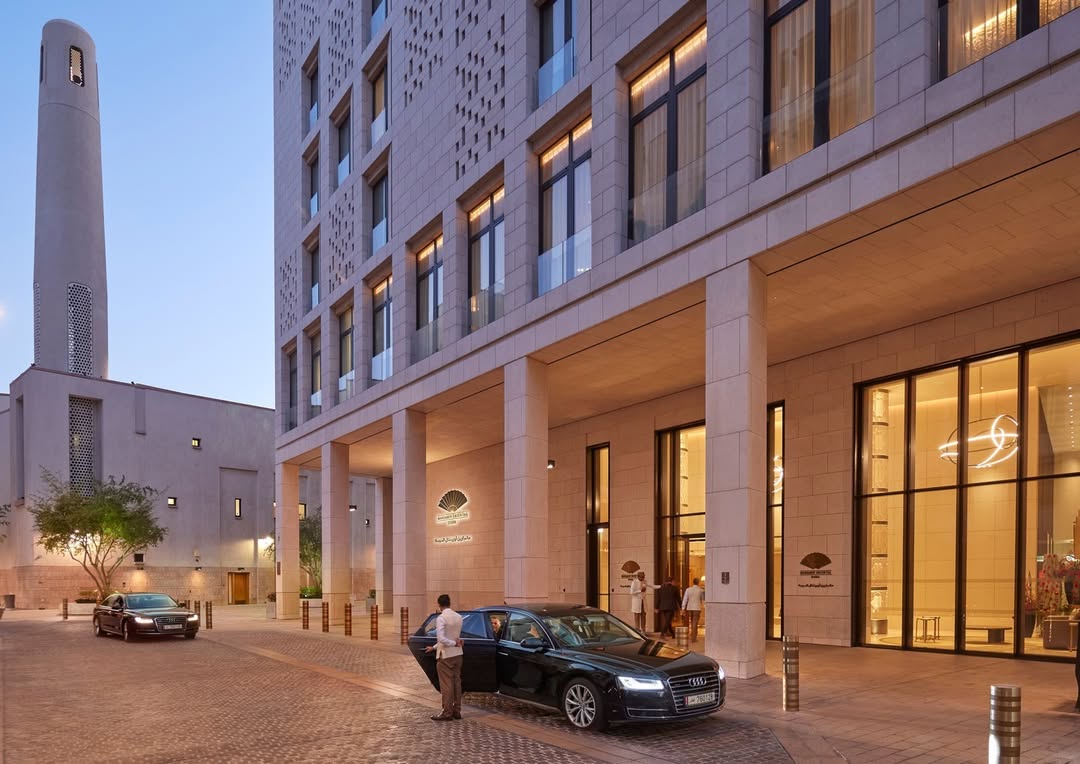All photos by Ren Wlasiuk
Qatar resident Ren Wlasiuk recently spent a few days observing the annual hatching of the carefully tended Hawksbill turtles, a species that some of the country’s scientists have been working hard to keep out of danger. Here, she reports on what’s being done to save the turtles, and how residents can help.
When Hawksbill sea turtles are ready to reproduce, they come ashore and head for the exact same spot that they were born in, or have previously nested.
In Qatar, many of these animals like to breed at Fuwairat beach, in northern Qatar.
But imagine a female turtle laboriously climbing across the sandy beach, heading for the perfect spot to lay her eggs. The terrain has changed since her birth – the sand is rutted with tire tracks and other obstacles.
Once she gets to her spot, she finds it occupied by an abandoned metal frame once belonging to a pergola, brought to the beach by picnickers who didn’t see any point in taking it with them after it broke.
She circles the giant obstacle sitting on her spot. Frustrated, she turns around and heads back to the sea, which entails another long trek over compacted ruts.

Later she returns, her instinct so strong and her need to lay her eggs overriding her exhaustion. Again she circles the metal frame. She’s not happy, but there is no time left. She is carrying up to 100 eggs inside her and the need to deliver them soon is a growing stress. So she digs.
But she is tired now, and the ground is hard. She digs half the size she needs to bury her eggs but she cannot wait any longer. She lays her eggs and does her best to cover them. Some are left exposed.
But that’s ok, because Qatar now has a “turtle team,” who checks the nest as soon as the mother turtle leaves. They note that some of the eggs are uncovered and spilling out of the nest, and they work carefully to move the nest to a secure area.
Saving the turtles
For the past two years, a small section of Fuwairat’s beach has been fenced off from April to July to facilitate turtle breeding.

For years, saving the turtles has been a joint collaboration here, between the Environmental Studies Center (ESC) and Qatar University, with support from the Ministry of Environment. Qatar Petroleum has largely funded the efforts.
Two ESC employees – Shafeeq Hamza, a biotechnologist who works with Dr. Mehsin Al Ansi, the principle investigator – both from ESC – explain the careful detailing of their work.
The peak season for egg laying falls in April and May. The female turtles come ashore in the cover of darkness. They know the exact spot they want. The turtle is discreetly monitored and once the clutch is laid, the team check to see if the female is a returnee and if they have her already tagged.
Currently, five females have transmitters attached to their shells. These turtles appear to have never left the Gulf, according to the map posted on the wall of a mobile home that serves as the ESC’s headquarters in Fuwairat.

This is how turtle breeding and feeding areas can be identified and protected.
In fact, the Hawksbill is the only turtle to breed in and around Qatar’s beaches, and they can lay up to three clutches of around 80 -120 eggs each time.
According to Hamza, once the eggs are laid, the team begins the task of carefully and slowly placing the eggs into the transfer box. They must not tip the egg or turn it – otherwise they run the risk of the hatchling suffocating by being placed in the wrong position.
From the transfer box, the eggs are taken to a secure area and slowly placed into a new nest – they are then covered and left to incubate. Hamza keeps an incredible amount of detail on each clutch, written up on a spreadsheet and used to monitor the success rate of each stage of the process.
This year, the team said they have about 29 clutches with approximately 80 eggs in each.
Earlier this week, on Monday night, 80 out of 83 hatchlings made it to the water. Out of those, the team said they expect a small percentage to not successfully make it to the open sea. The light of the horizon distracts some hatchlings, and the changing tide is too strong for others, whose bodies wash up on the beach later.
Environmental concerns
Though the team has seen very good success rates this year and last year, they said they continue to worry about the gradual erosion of the Hawksbill’s environment.
Hamza said the turtle team would like to keep the fence up all year around, and maintain it as a secure, no access area. The ESC also favors banning cars from the whole area all year long, as SUVs tend to compact the sand, creating hard ridges that are difficult for turtles to negotiate.
Fires and barbecues are also a problem, as the charcoal absorbs oxygen from the sand. And jet skiers within a certain area of the shore need to be banned as they disturb the waters and frighten the turtles.
Additionally, picnickers often leave all kinds of rubbish and plastic bags behind. And then there are the dogs. Not to mention the people who try to steal the eggs or interrupt a mama turtle trying to lay her eggs just because they want to take a video of it.

The problems are compounded when the ESC team politely tries to make people aware of the impact of their actions. They are sometimes met with open hostility and challenged.
If the area was designated as a “no public access” site, the turtle team believes they could maintain the situation more easily.
Team members said they are hopeful because the current Minister of Environment, Ahmed Al Humaidi, is believed to be sympathetic to the preservation of turtles. Requests to permanently fence off the beach area are under consideration.
Hamza said:
“If we could at least ban cars and fires in this area that would be a huge step in the right direction. Most of the public coming here are fine. They are very respectful of what we do. It’s a minority that cause the problems. But ideally, completely no access would be the perfect situation for the turtles.”
Doing our part
The marine expert pulls out a video of a typical afternoon at the beach. Cars revving can be observed, as well as music blaring, kids running around, barbecues cooking and jet skiers splashing in the background.
Just a typical afternoon at the beach, right?
‘Think about it,” Hamza said. “Turtles are shy timid creatures. It’s all too much and one day they won’t come back. That’s what we are worried about.”
Taking stricter measures to protect Qatar’s Hawksbill turtles doesn’t mean that residents can’t witness their beauty.

The turtle team encourages people to visit the beach this time of year to see the results of months of planning and observation. They would also like to see more organized school trips to show what they do and so that students can meet some of the turtles once they have laid their eggs.
Finally, they also welcome biodiversity graduates to participate in the research and gain experience on a live project.
It was 8:30pm when I left. Hamza gave me a lift back to the car on the dune buggy and along the way I noticed with sadness the abandoned plastic bags, bottles, broken glass and other detritus littering the beach.
Everyone had a great day at the beach today. Pictures will be swapped on Facebook. Sandy heads will fall into pillows exhausted but happy.
Meanwhile, another turtle will slowly and laboriously make her way up the beach, avoiding the broken bottle, shaking off the plastic bag, determined to get to her “spot.” Only to find someone left a discarded barbecue there…
Thoughts?

